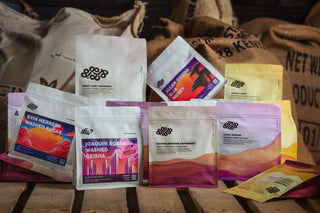For the 4th installation of #customroasterseries, about our 45kg coffee roaster that we finished designing and building last summer (after 3 years of work!), I’ll be talking about our custom roast control software.
My day job prior to the coffee business was embedded software engineering, so while tasks like designing the combustion system required consultation with combustion and mechanical engineers, the electronics and software controls are my comfort zone. For this reason, I would say that our control system is what most sets our roaster apart from all others I’ve come across.

The first unique feature of our system is that the logging and control systems are fully integrated. Most speciality coffee roasting companies are using data logging setups like Cropster, but they still need to manually execute their roaster power changes outside the tool and “record” them in Cropster. Even the most attentive operators will miss-mark moves with the wrong value or time. With our system, when you mark a power change, it both logs it and executes it in the same instant. The 2nd problem is missing moves. Again, even the most focused coffee roaster needs to attend to other tasks while roasting, such as weighing out subsequent batches or color scanning. To ensure moves are never missed, our system has a feature to automatically execute the power moves of a reference profile.
You might ask: why don’t you just automate the process to follow a reference profile? This is my goal, however there are a number of considerable challenges to overcome. First off, the auto systems I’ve seen execute a PID algorithm on a temperature (such as the bean temperature). This creates erratic and aggressive power variations in an attempt to control a slow responding variable (like the bean temperature). Also, we’ve clearly seen that just because the same bean curve is achieved doesn’t mean the same roast is achieved. I would argue that the same roast can only be achieved if all of the same roast parameters are obtained: the same bean temperature, environment temperature and power (gas) profile (and cooling). This elegant reproduction of a roast is the holy grail, and what we seek.
-Phil







